

Edinburgh
Photos taken in August 2011
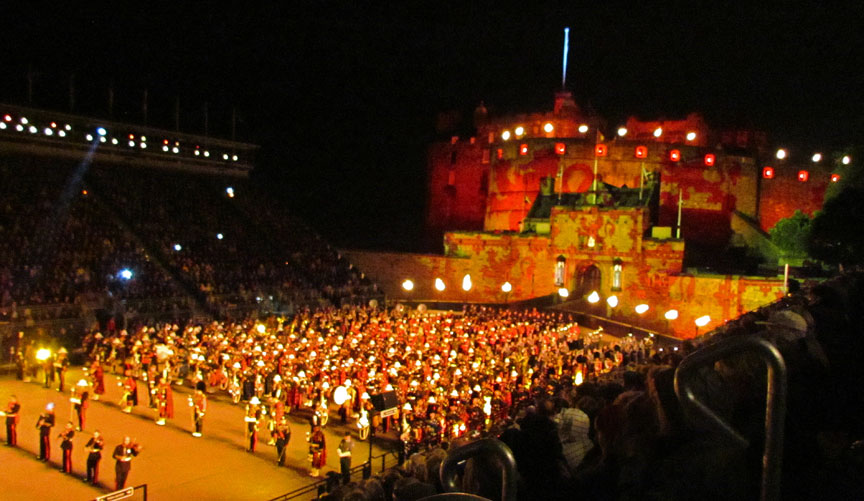
2011 Royal Military Tattoo
Culturally, Edinburgh is best known for the Edinburgh Festival, which is a series of separate events running from the end of July until early September each year. The longest established festival is the Edinburgh International Festival, which first ran in 1947. The International Festival centres on a programme of high-profile theatre productions and classical music performances, featuring international directors, conductors, theatre companies and orchestras.
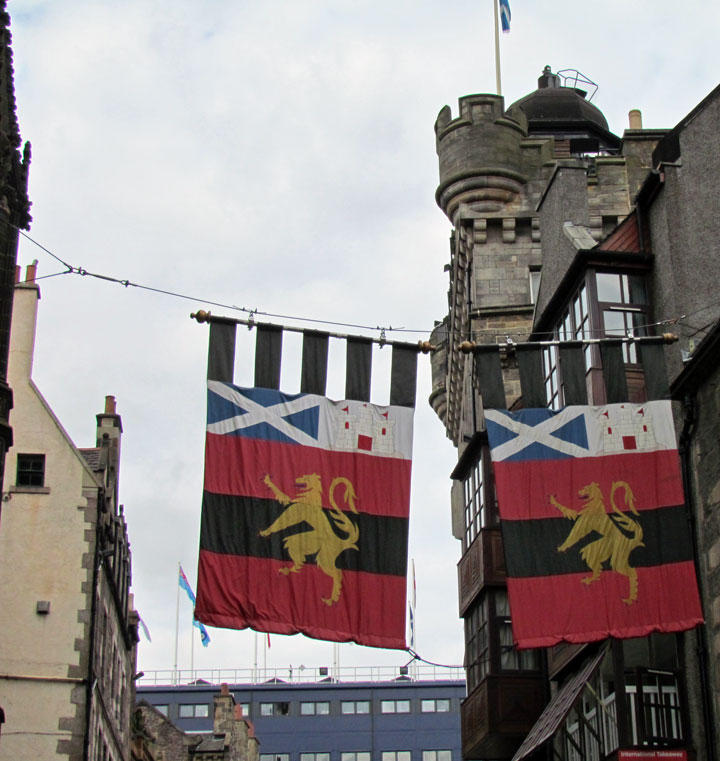
The International Festival has since been overtaken in both size and popularity
by the Edinburgh Fringe. What began as a programme of marginal acts has become
the largest arts festival in the world, with 1867 different shows being staged
in 2006, in 261 venues. Comedy is now one of the mainstays of the Fringe, with
numerous notable comedians getting their 'break' here, often through receipt of
the Edinburgh Comedy Award. In 2008 the largest comedy venues on the Edinburgh
Fringe launched as a festival within a festival, labelled the Edinburgh Comedy
Festival. Already at its inception it was the largest comedy festival in the
world. Alongside these major festivals, there is also the Edinburgh Art
Festival, Edinburgh International Film Festival (moved to June from 2008), the
Edinburgh Jazz and Blues Festival, and the Edinburgh International Book
Festival. The Edge Festival (formerly known as T on the Fringe), a popular music
offshoot of the Fringe, began in 2000, replacing the smaller Flux and Planet Pop
series of shows.
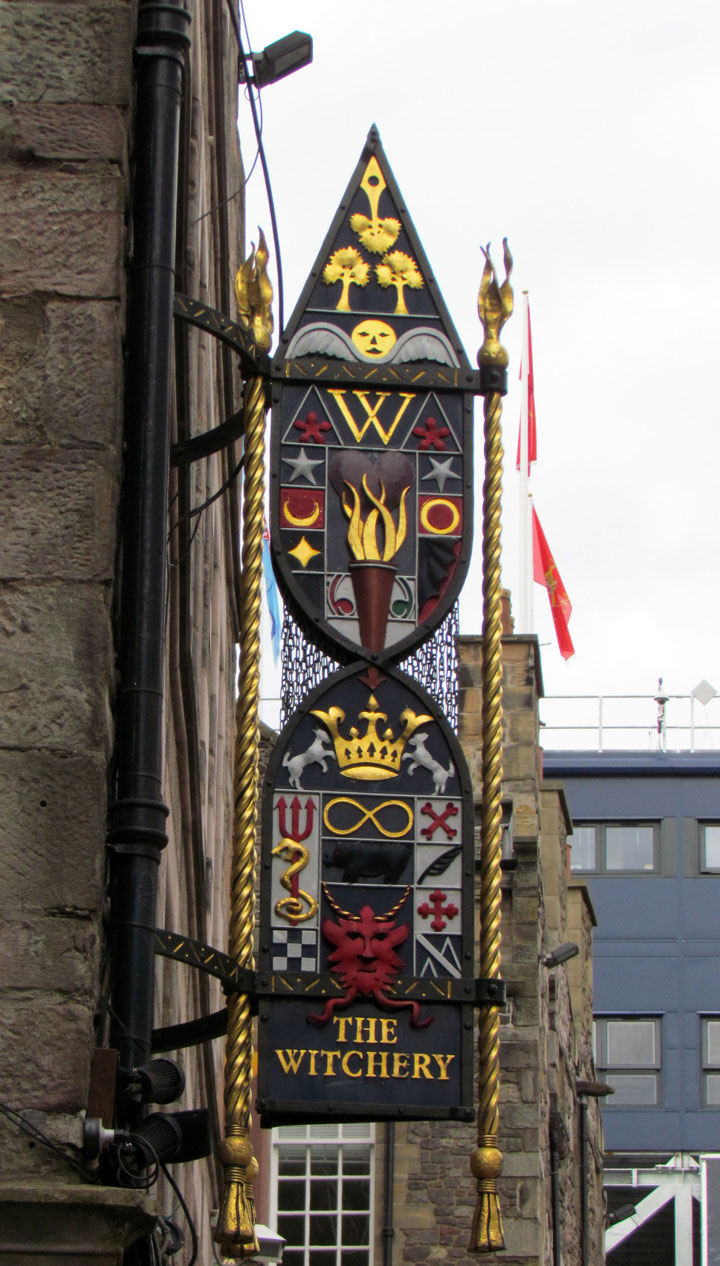
Running concurrently with the summer festivals, the
Edinburgh Military Tattoo
occupies the Castle Esplanade every night, with massed pipers and fireworks. As
well as the various summer festivals there is also the Edinburgh International
Science Festival. Held annually in April it is one of the largest of its kind in
Europe.
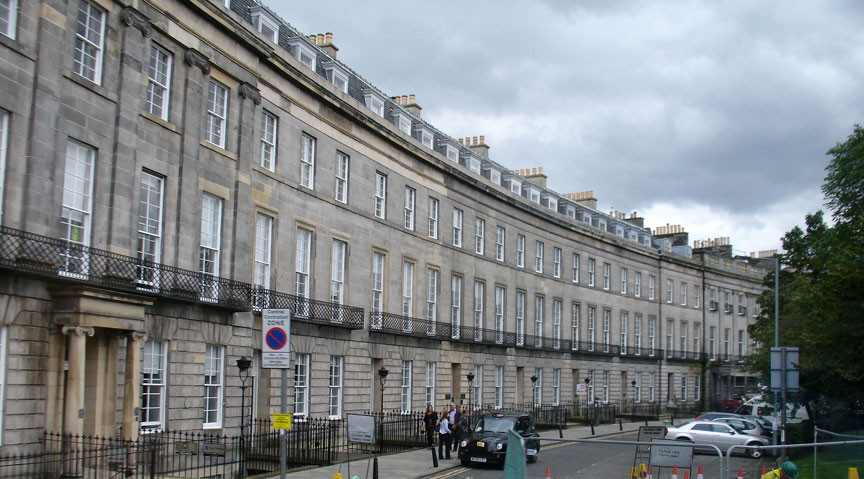
Georgian
Equally famous is the annual Hogmanay celebration. Originally a street party held on Princes Street and the Royal Mile, the Hogmanay event has been officially organised since 1993. In 1996, over 300,000 people attended, leading to ticketing of the main street party in later years, with a limit of 100,000 tickets. Hogmanay now covers four days of processions, concerts and fireworks, with the street party commencing on Hogmanay. During the street party Princes Street is accessible by ticket only, with live bands playing, food and drink stalls, and a clear view of the castle and fireworks. Alternative tickets are available for entrance into the Princes Street Gardens concert and Céilidh, where well known artists perform and ticket holders are invited to participate in traditional Scottish céilidh dancing. The event attracts thousands of people from all over the world.

On the night of 30 April, the Beltane Fire Festival takes place on Edinburgh's
Calton Hill. The festival involves a procession followed by the re-enactment of
scenes inspired by pagan spring fertility celebrations. At the beginning of
October each year, the Dussehra Hindu Festival is also held on Calton Hill.
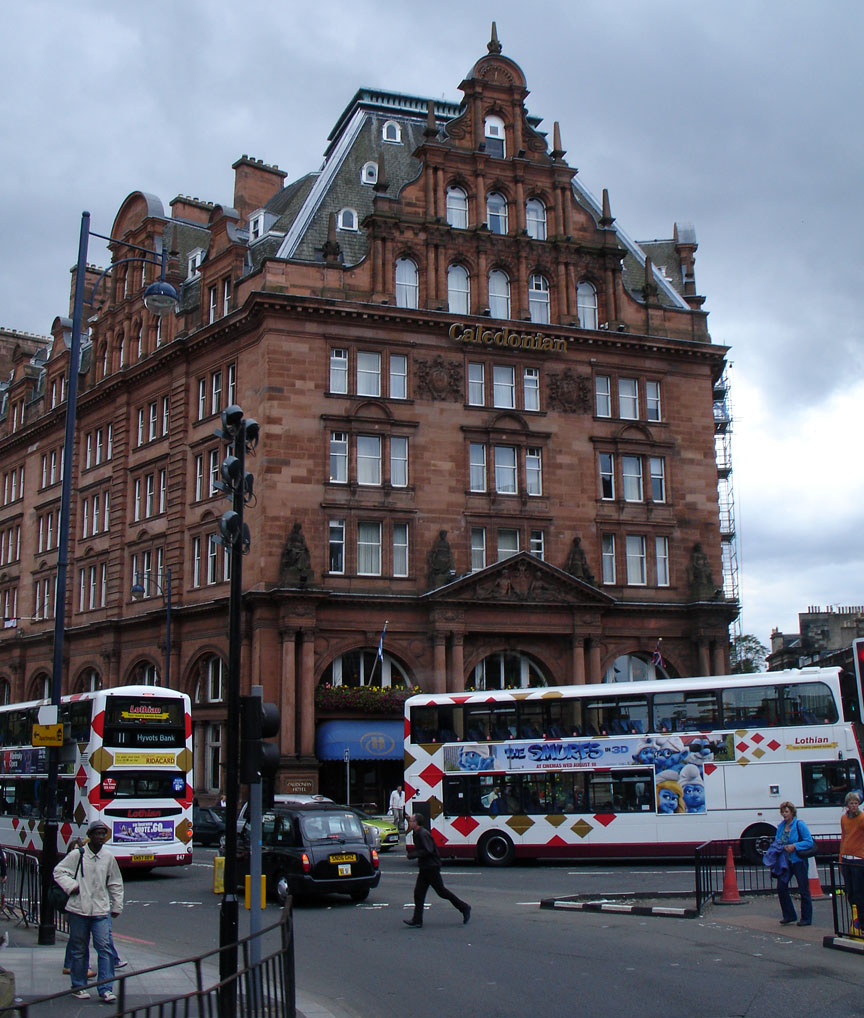
Edinburgh has a large number of museums and libraries, many of which are
national institutions. These include the Museum of Scotland, the Royal Museum,
the National Library of Scotland, National War Museum of Scotland, the Museum of
Edinburgh, Museum of Childhood and the Royal Society of Edinburgh.
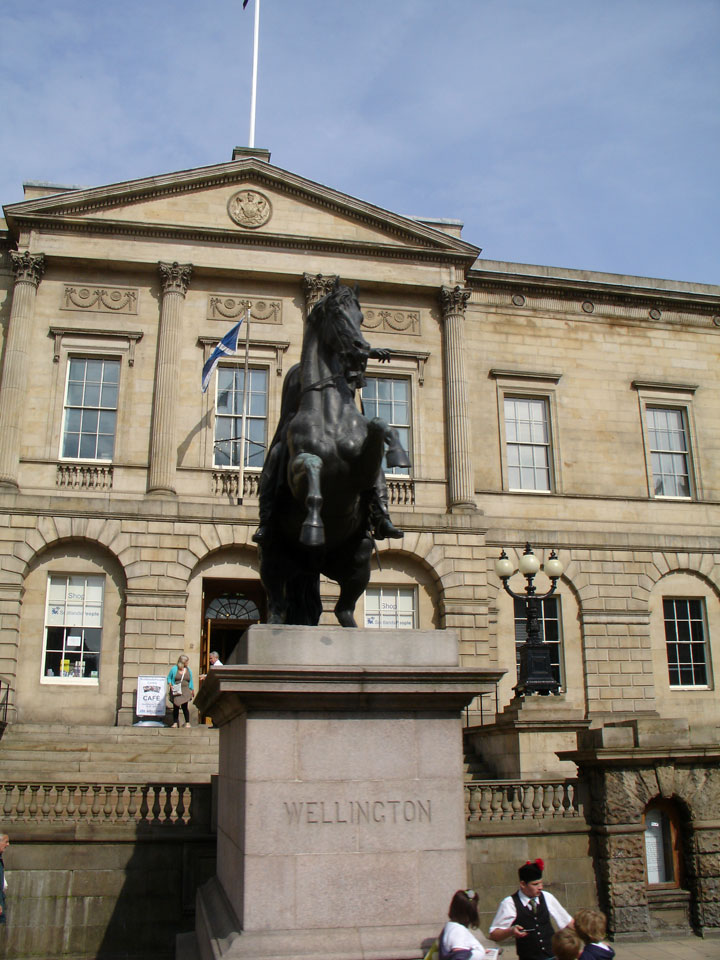
Wellington
Edinburgh has a long literary tradition, going back to the Scottish Enlightenment and in more recent years being declared the first UNESCO City of Literature in 2004. Edinburgh's Enlightenment produced philosopher David Hume and the pioneer of political economy, Adam Smith. Writers such as James Boswell, Robert Louis Stevenson, Sir Arthur Conan Doyle, and Sir Walter Scott all lived and worked in Edinburgh. Today, the city is the home of many publishing companies. J K Rowling, author of the Harry Potter novels, is a resident of Edinburgh. Edinburgh has also become associated with the crime novels of Ian Rankin, and the work of Irvine Welsh, whose novels are mostly set in the city and are often written in colloquial Scots. Edinburgh is also home to the international best-selling author Alexander McCall Smith.
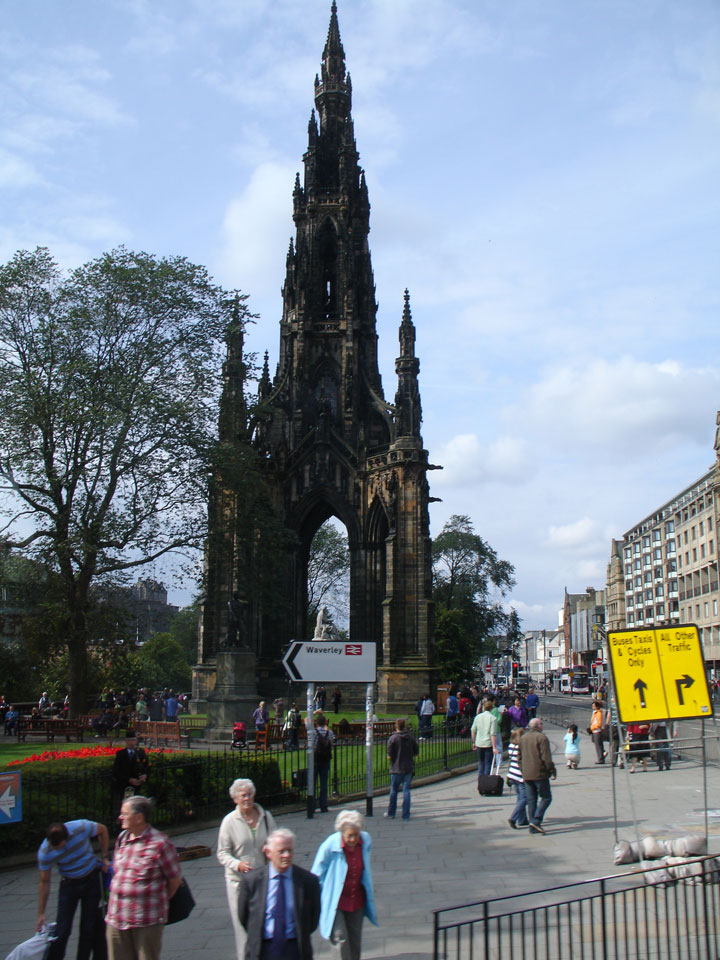
Robert Burns Memorial
Outside festival season, Edinburgh continues to support a number of theatres and production companies. The Royal Lyceum Theatre has its own company, while the King's Theatre, Edinburgh Festival Theatre, and Edinburgh Playhouse stage large touring shows. The Traverse Theatre presents a more contemporary programme of plays. Amateur theatre companies productions are staged at the Bedlam Theatre, Church Hill Theatre, and the King's Theatre amongst others. Youth Music Theatre: UK has a regional office in the city.
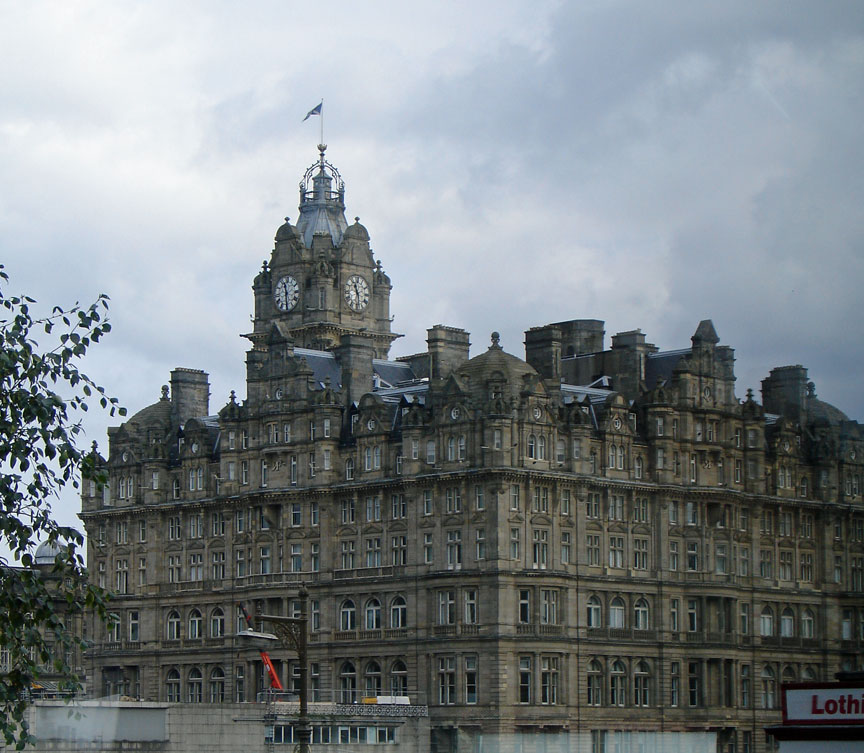
The Usher Hall is Edinburgh's premier venue for classical music, as well as the
occasional prestige popular music gig. Other halls staging music and theatre
include The Hub, the Assembly Rooms and the Queen's Hall. The Scottish Chamber
Orchestra is based in Edinburgh.
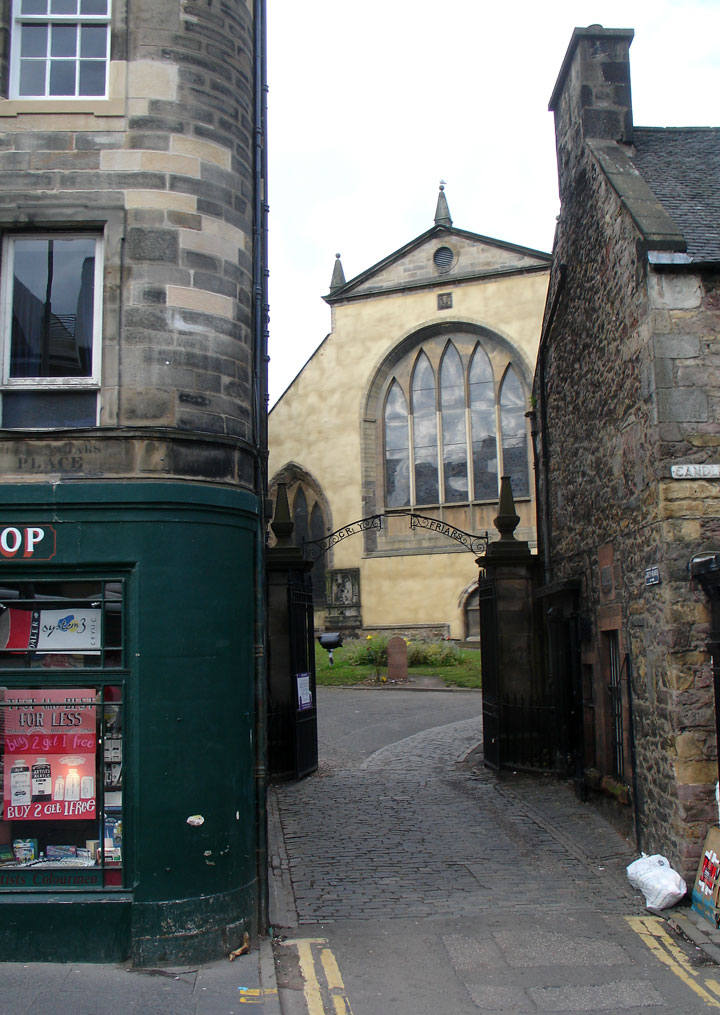
Edinburgh has two repertory cinemas, the Edinburgh Filmhouse, and the Cameo, and
the independent Dominion Cinema, as well as the usual range of multiplexes.

Edinburgh has a healthy popular music scene. Occasional large gigs are staged at
Murrayfield and Meadowbank, with mid-sized events at venues such as the Corn
Exchange, HMV Picture House, the Liquid Rooms, and the Bongo Club. Smaller more
intimate shows can be found at venues like Cabaret Voltaire, Sneaky Pete's, The
Store, The Voodoo Rooms, Bannerman's, Henry's Cellar Bar and Forrest Cafe.
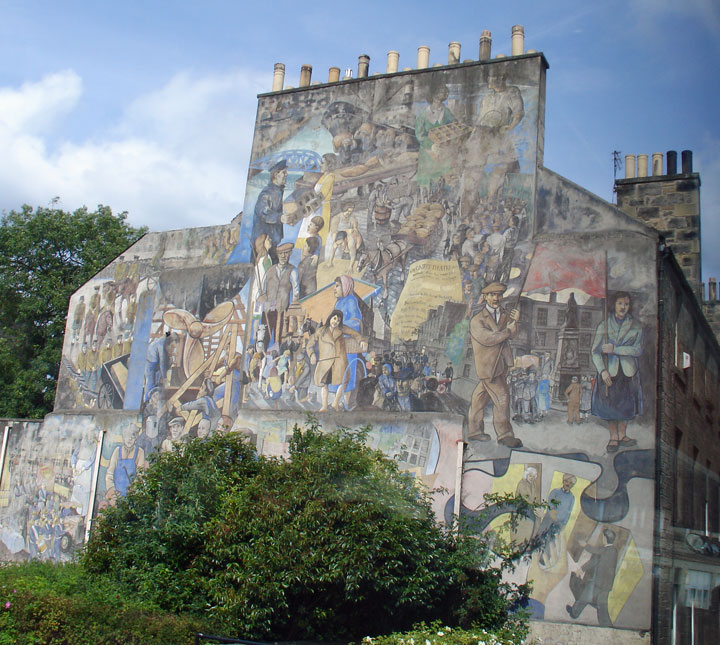
In 2010, PRS for Music listed Edinburgh amongst the UK's top ten 'most musical'
cities.
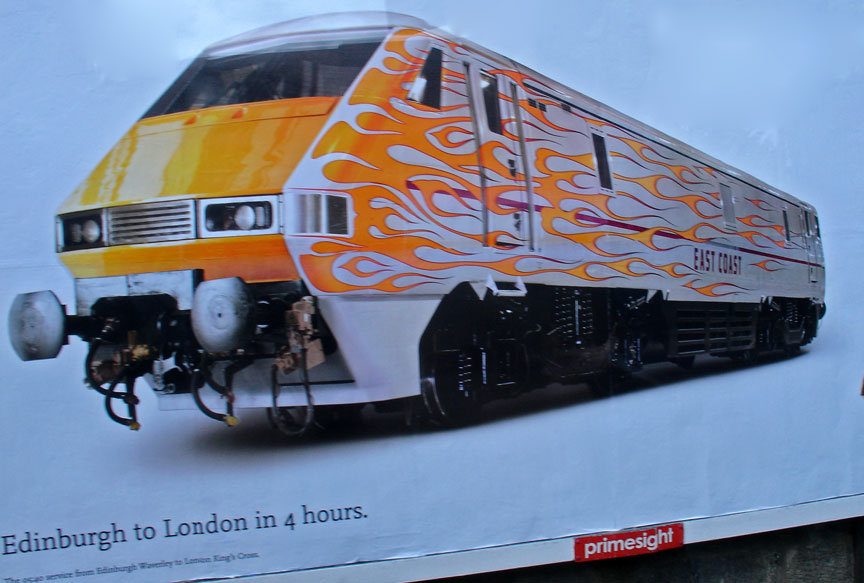
Edinburgh is also home to a flourishing group of contemporary composers such as
Nigel Osborne, Peter Nelson, Lyell Cresswell, Hafliði Hallgrímsson, Edward
Harper, Robert Crawford, Robert Dow, and John McLeod whose music is heard
regularly on BBC Radio 3 and throughout the UK.

Edinburgh contains Scotland's five National Galleries as well as numerous
smaller galleries. The national collection is housed in the National Gallery of
Scotland, located on the Mound, and now linked to the Royal Scottish Academy,
which holds regular major exhibitions of painting. Contemporary collections are
shown in the Scottish National Gallery of Modern Art, and the nearby Dean
Gallery. The Scottish National Portrait Gallery focuses on portraits and
photography.
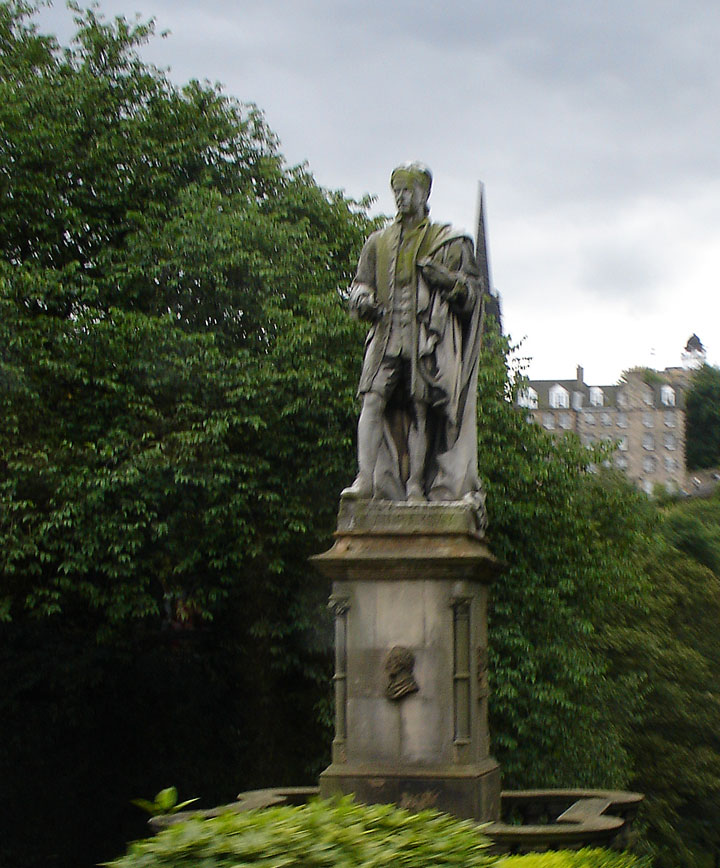
The council-owned City Art Centre shows regular art exhibitions. Across the
road, The Fruitmarket Gallery offers world class exhibitions of contemporary
art, featuring work by British and international artists with both emerging and
established international reputations.
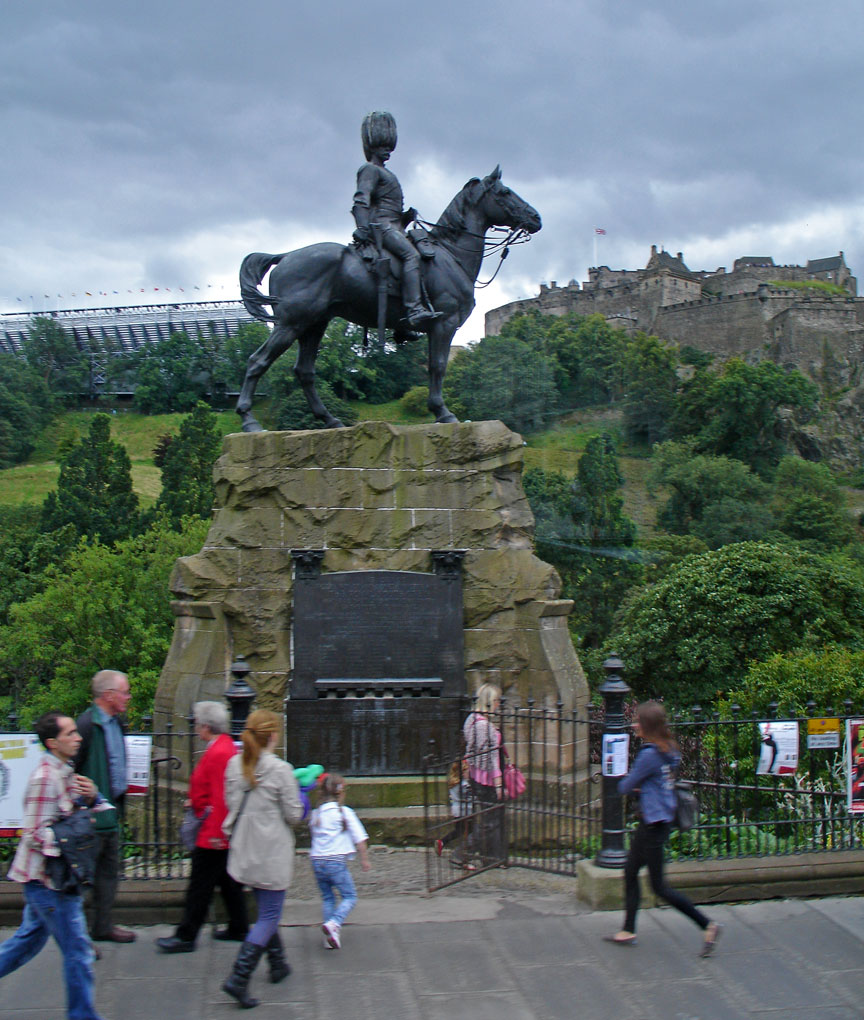
There are private galleries, including Doggerfisher and Ingleby Gallery, the
latter providing a varied programme including shows by Callum Innes, Peter
Liversidge, Ellsworth Kelly, Richard Forster, and Sean Scully.
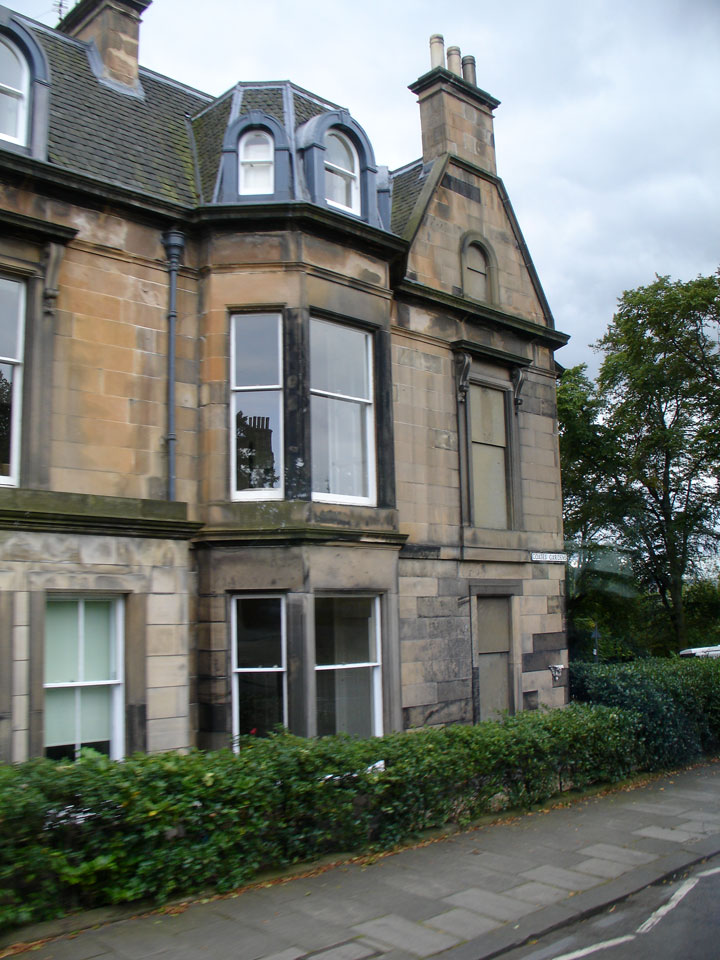
The city hosts several of Scotland's galleries and organisations dedicated to
contemporary visual art. Significant strands of this infrastructure include: The
Scottish Arts Council, Edinburgh College of Art, Talbot Rice Gallery (University
of Edinburgh) and the Edinburgh Annuale.
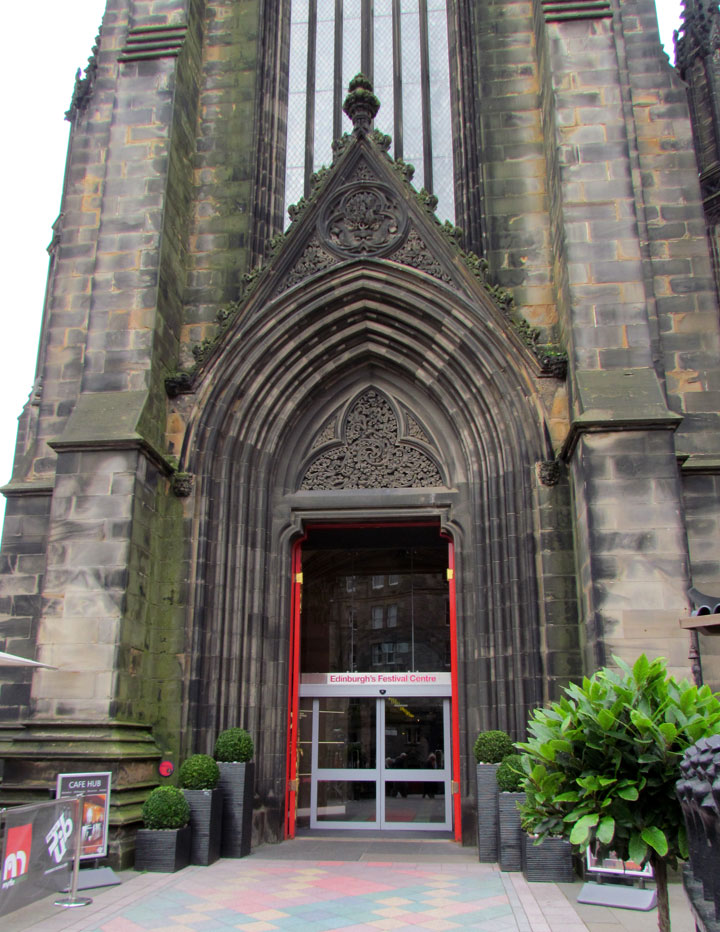
Edinburgh Festival Centre
Edinburgh has a large number of pubs, clubs and restaurants. The traditional areas were the Grassmarket, Lothian Road and surrounding streets, Rose Street and its surrounds and the Bridges. In recent years George Street in the New Town has grown in prominence, with a large number of new, upmarket public houses and nightclubs opening, along with a number on the parallel Queen Street. Stockbridge and the waterfront at Leith are also increasingly fashionable areas, with a number of pubs, clubs and restaurants. On a side note on the nightlife, Edinburgh is the Top UK city for male single travelers, according to a recent Excite EU study.
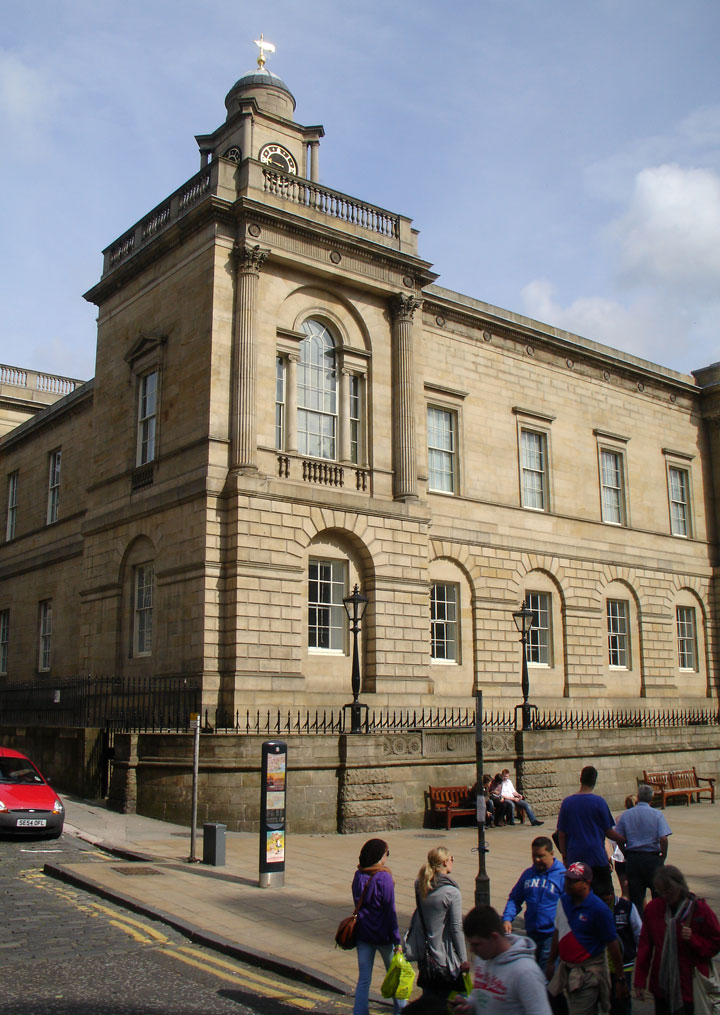
Princes Street is the main shopping area in the city centre, with a wide range
of stores from souvenir shops, from chains such as Boots and H&M and
institutions like Jenners. George Street, north of Princes Street, is home to a
number of upmarket chains and independent stores. The St. James Centre, at the
eastern end of George Street and Princes Street, hosts a substantial number of
national chains including a large John Lewis. Multrees Walk, adjacent to the St.
James Centre, is a recent addition to the city centre, hosting brands such as
Louis Vuitton, Emporio Armani, Mulberry and Calvin Klein, with Harvey Nichols
anchoring the development.
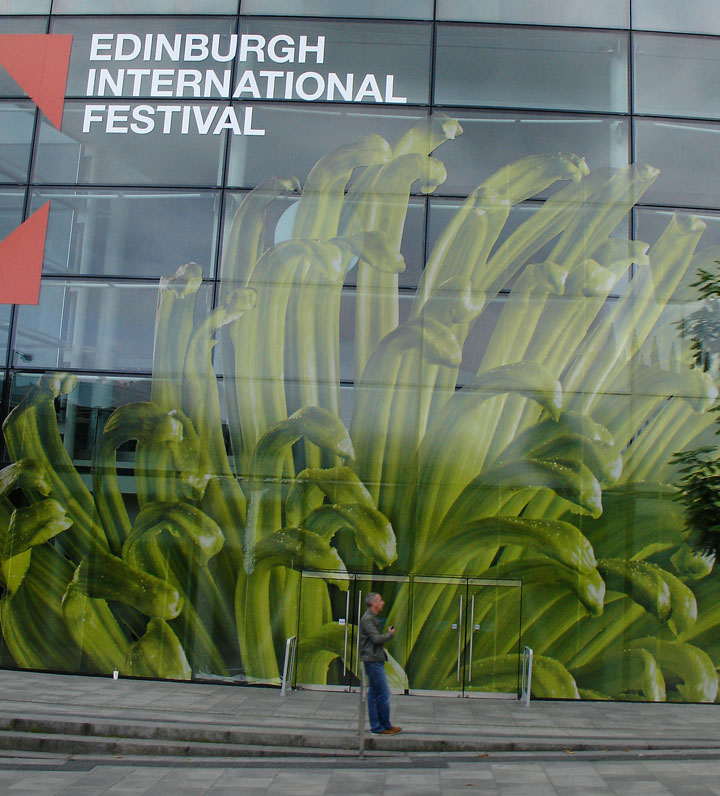
Edinburgh also has substantial retail developments outside the city centre.
These include The Gyle and Hermiston Gait in the west of the city, Cameron Toll,
Straiton Retail Park and Fort Kinnaird in the south and east, and Ocean Terminal
to the north, on the Leith waterfront. The
Royal Yacht Britannia lies in dock here next to the centre.
Text from Wikipedia
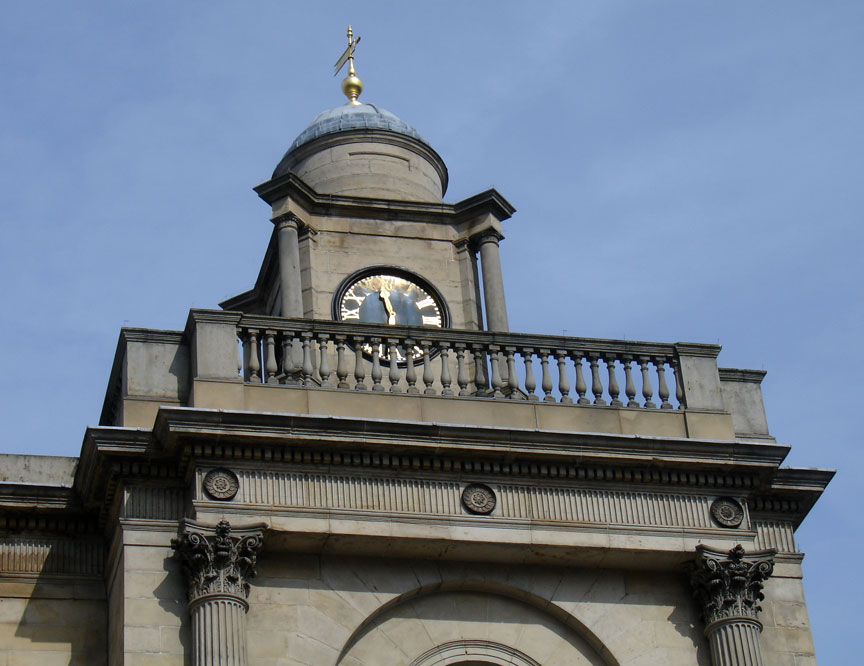
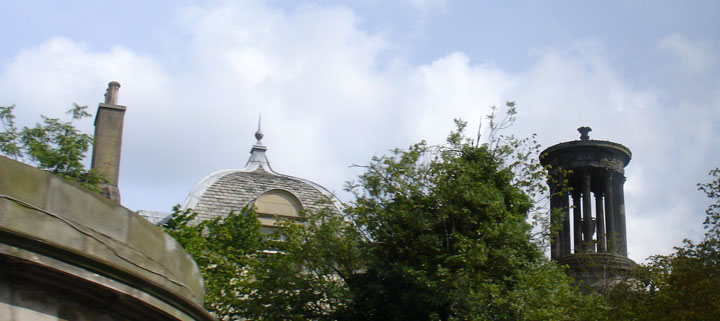
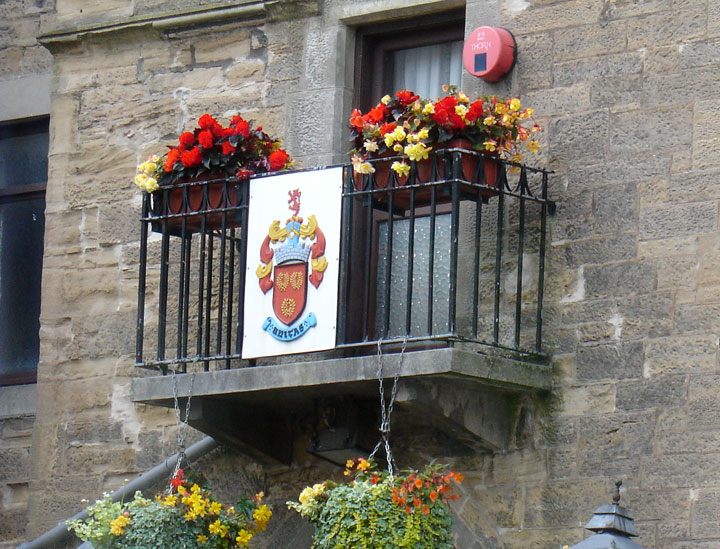
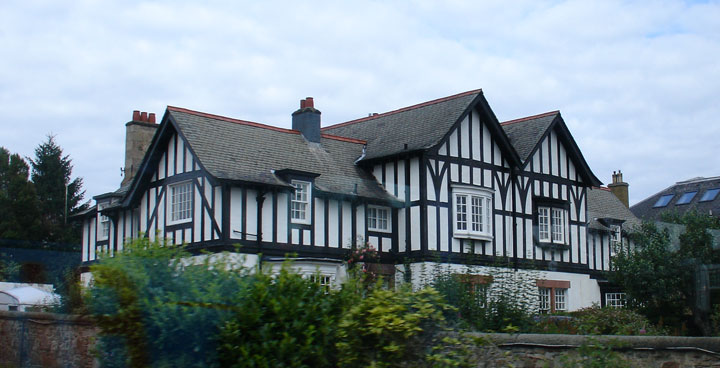
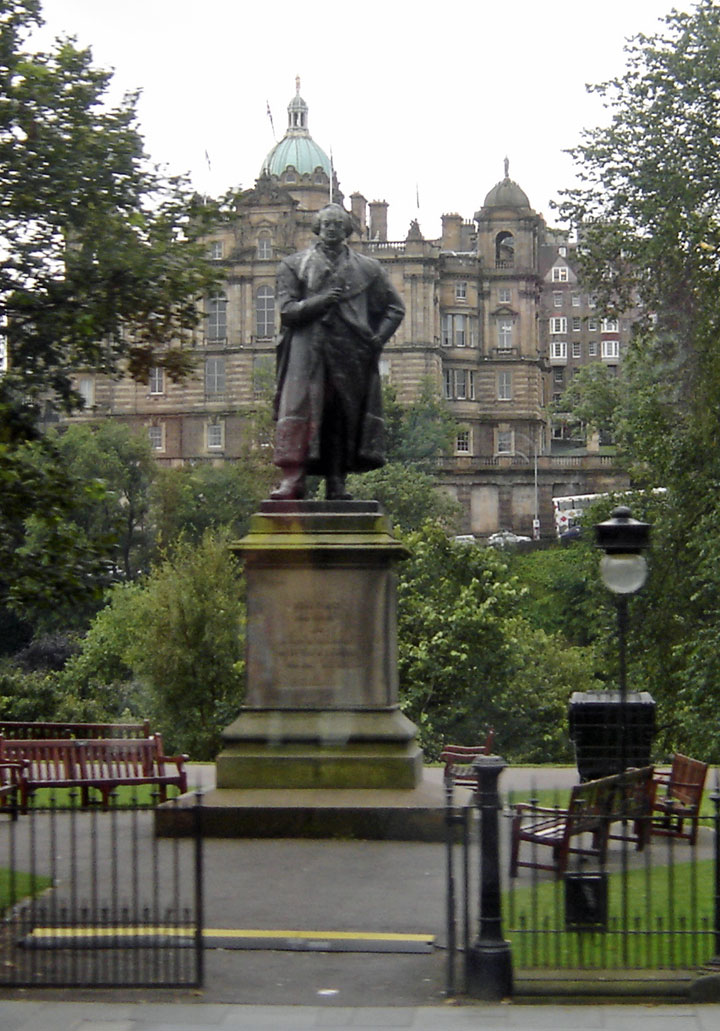
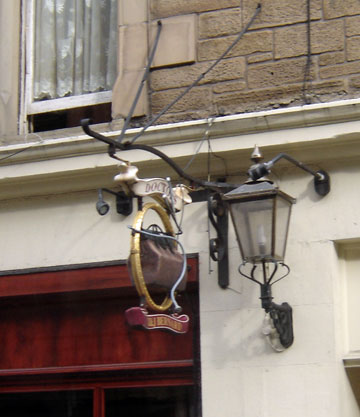
"Doctors" sign
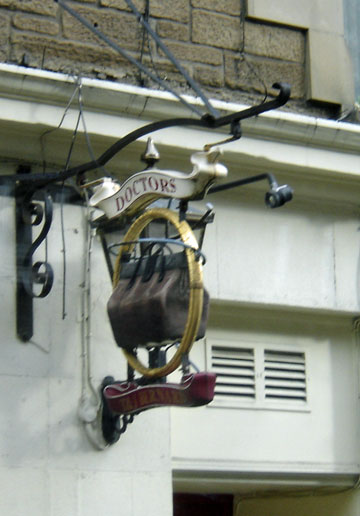
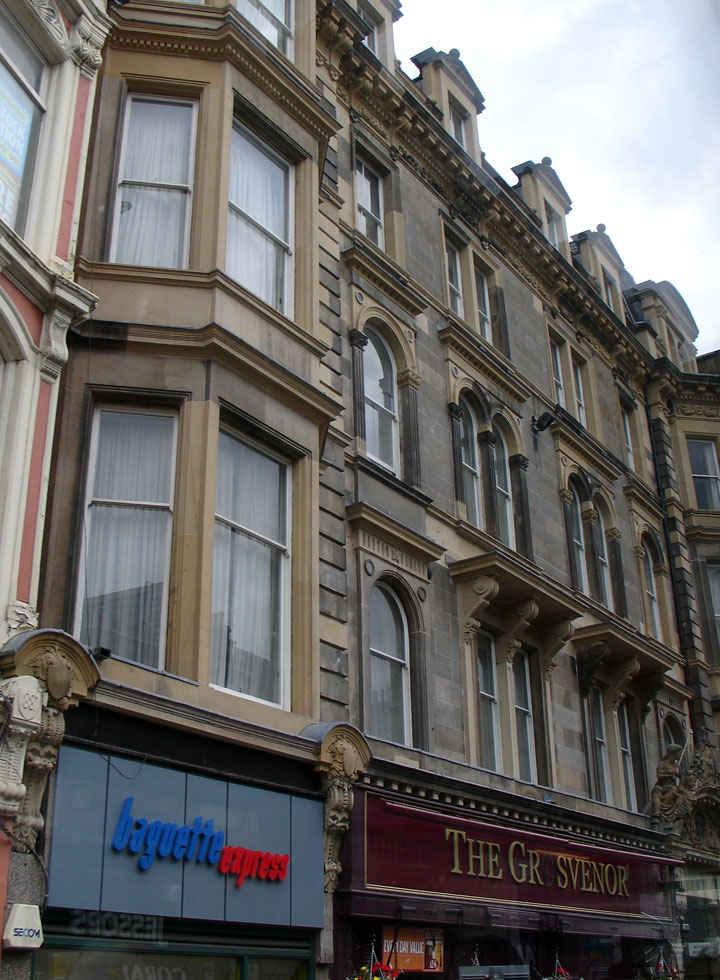
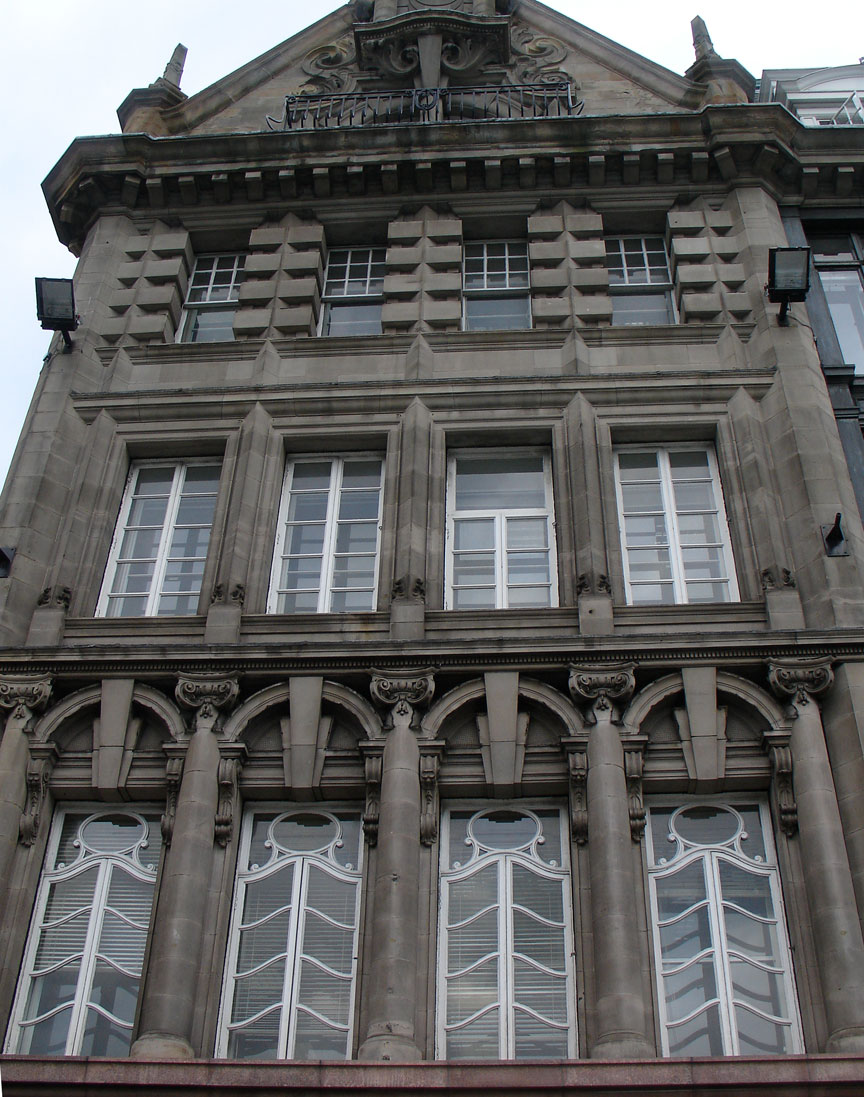

birthplace of Alexander Graham Bell
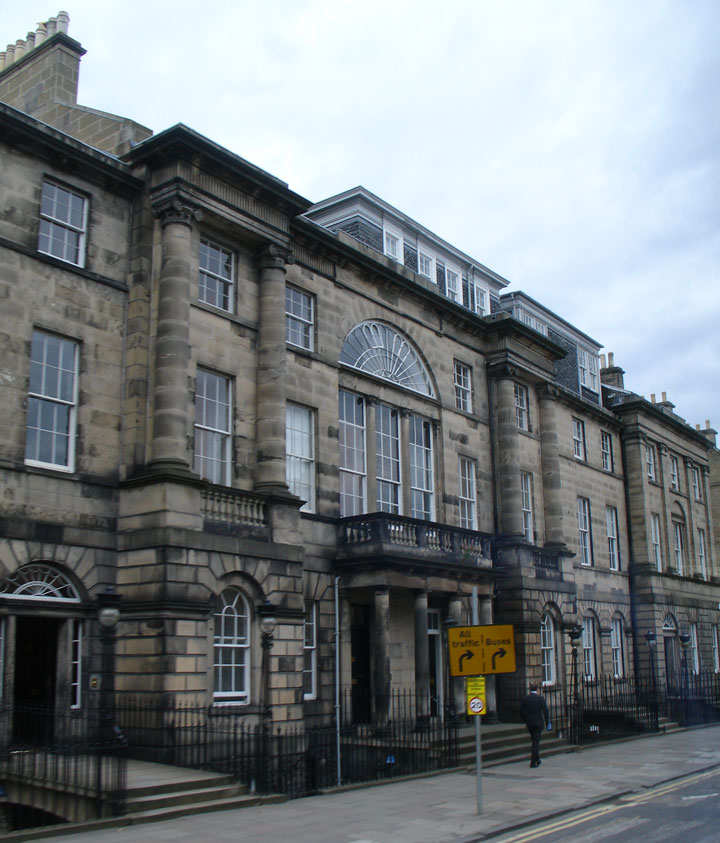
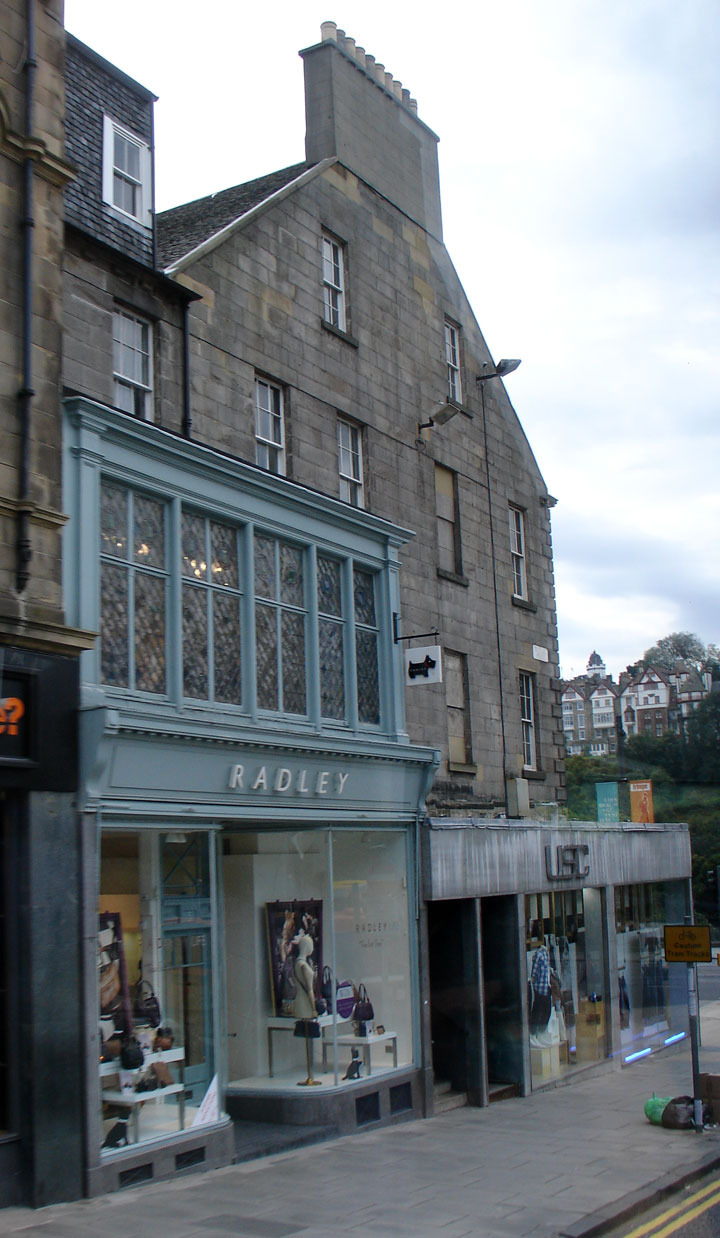
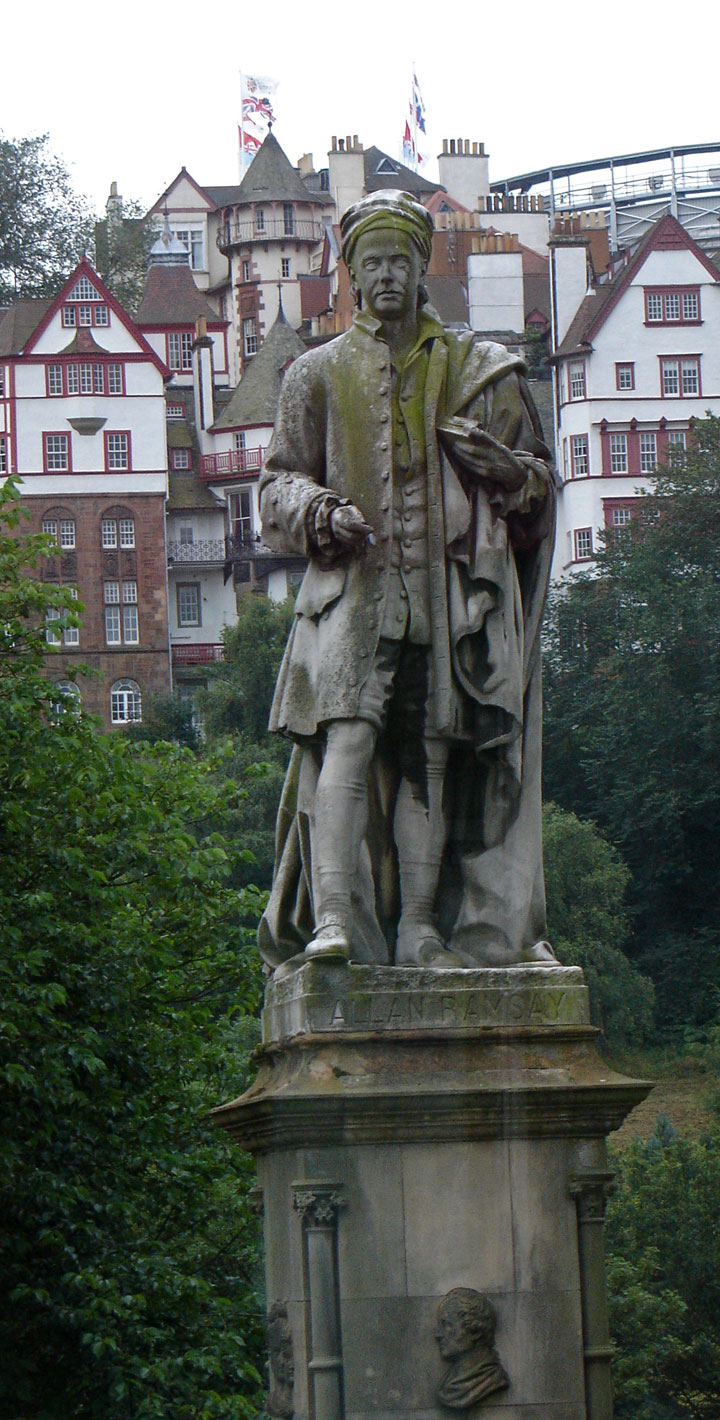
Alan Ramsay
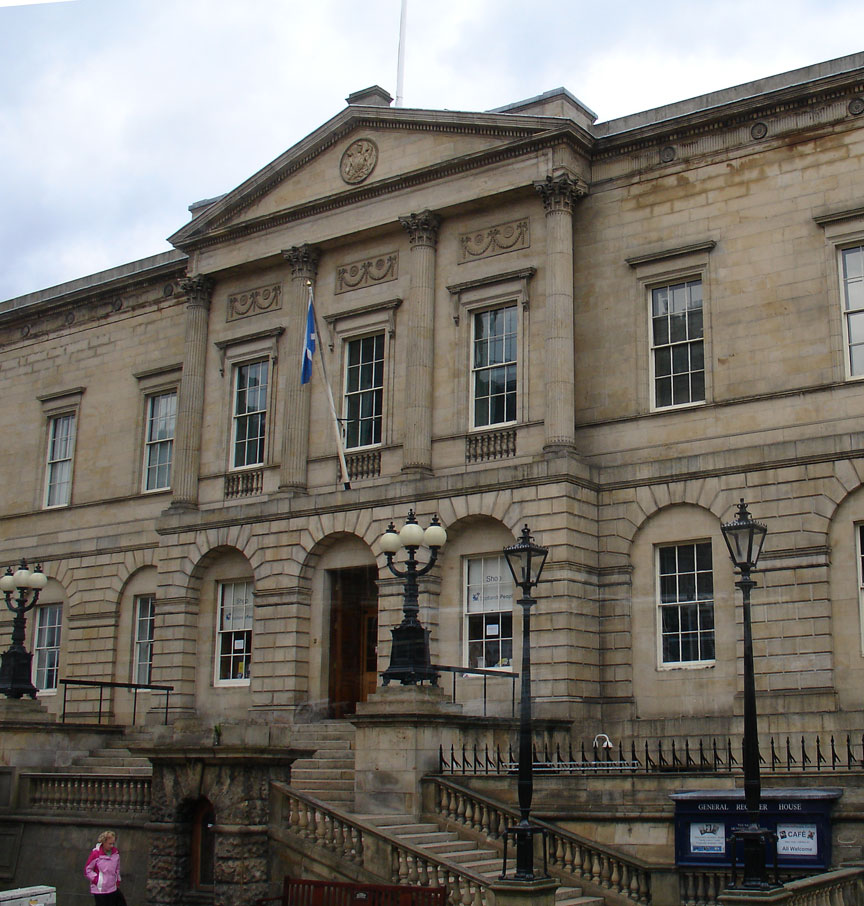
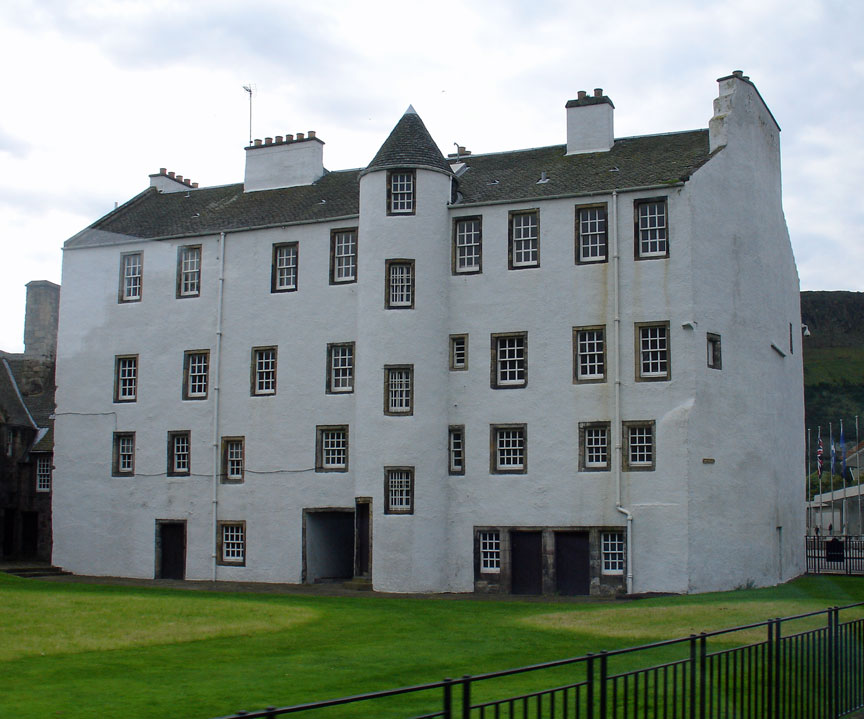
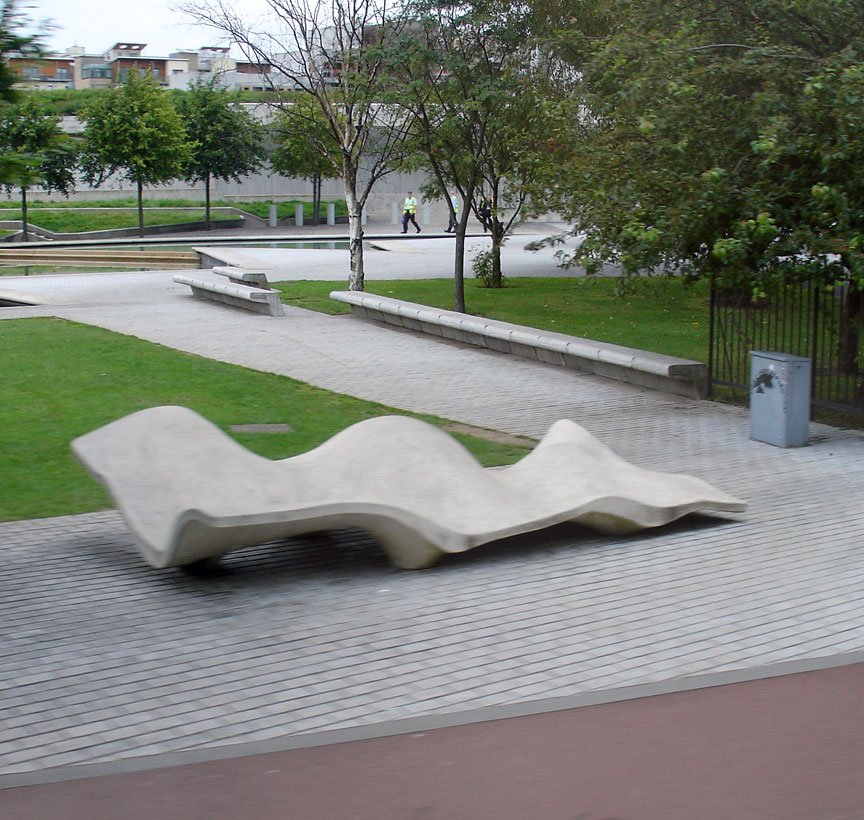
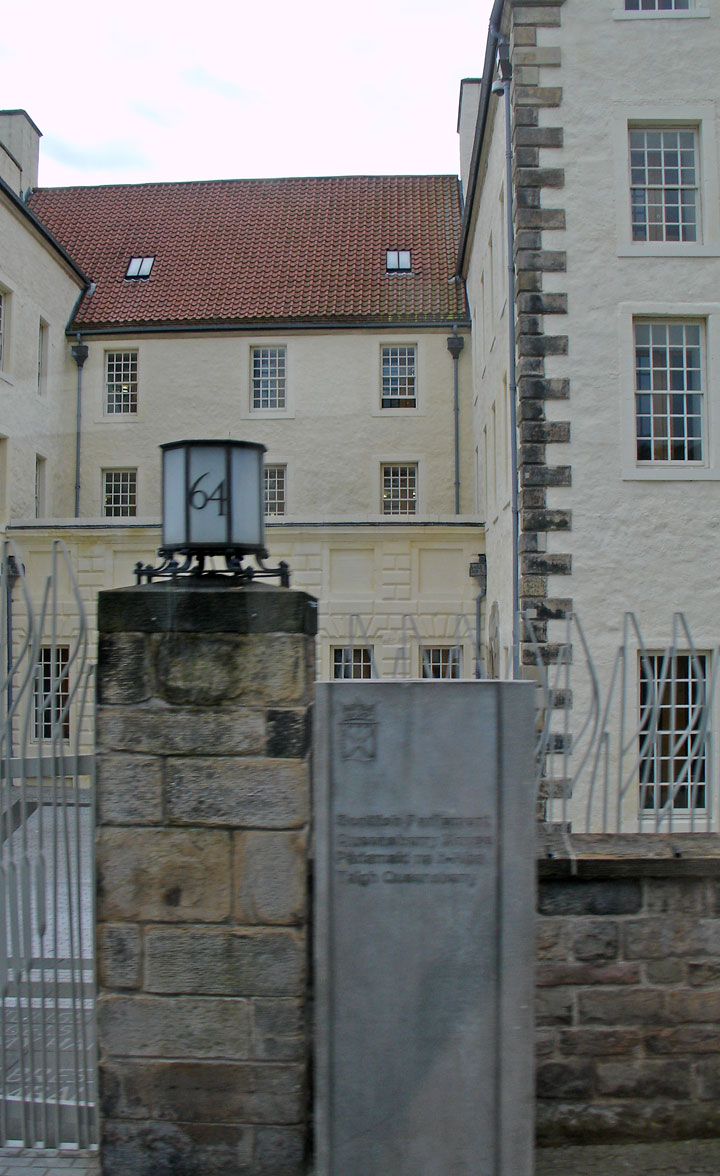

Museum of Edinburgh
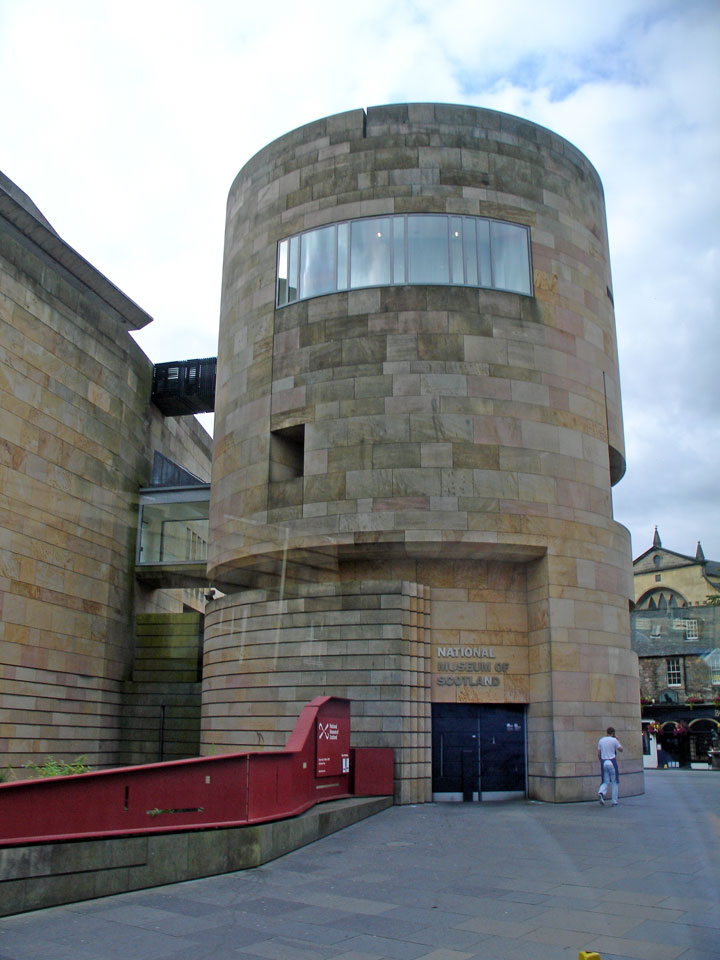
National Museum of Scotland
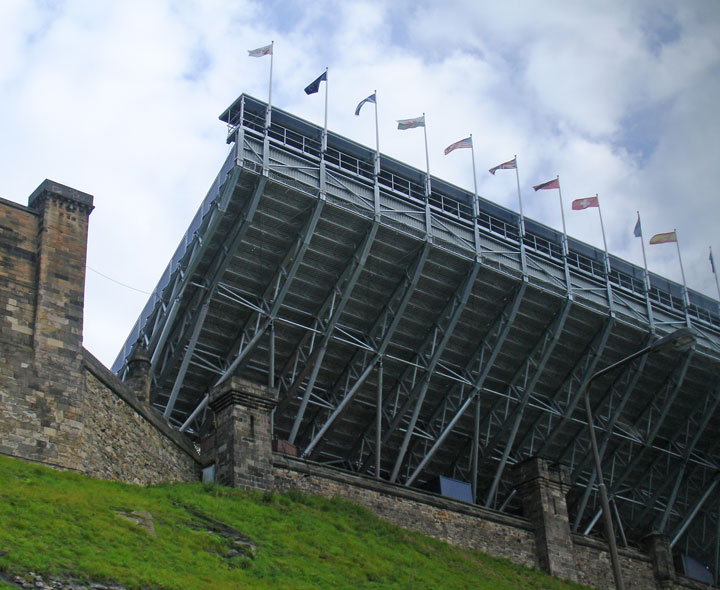
seating on the Castle Esplanade
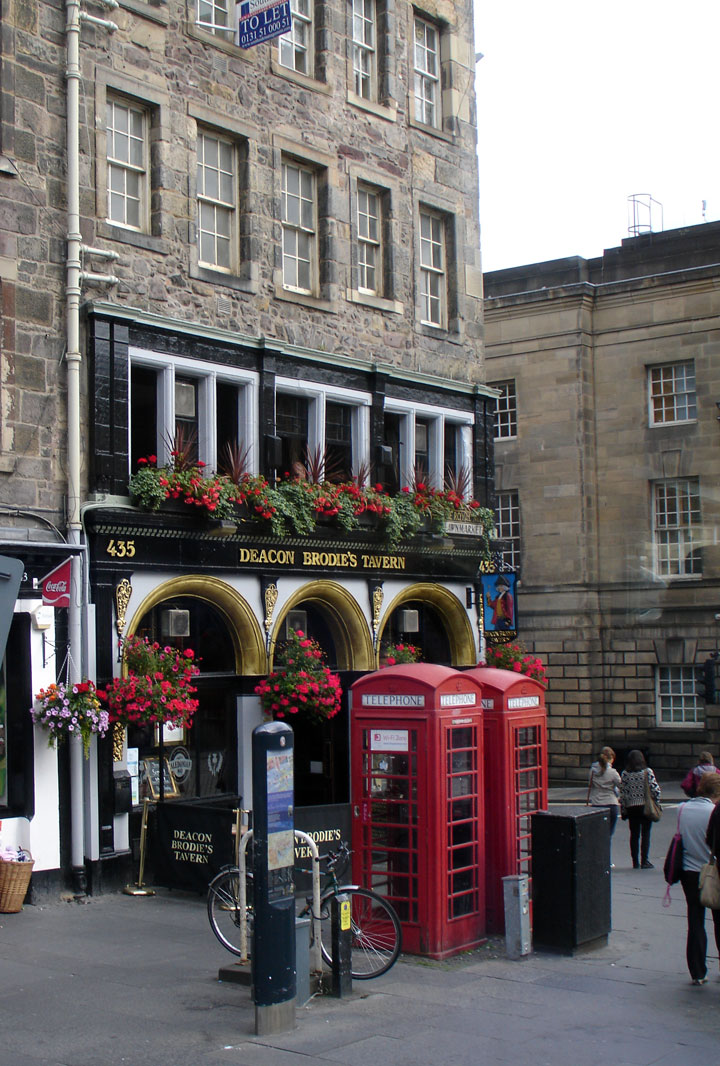
Deacon Brodie's Tavern
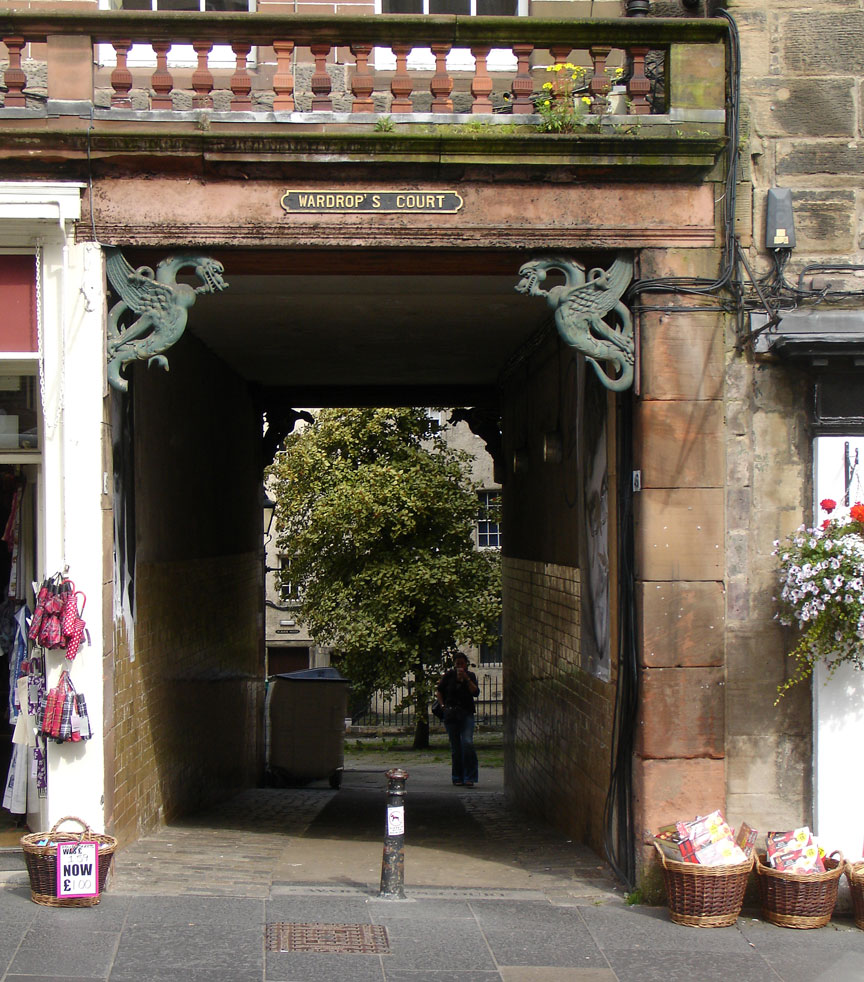
court behind the Royal Mile
Forth Rail Bridge

